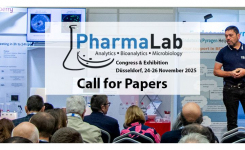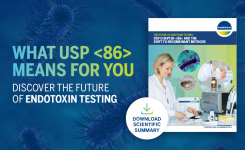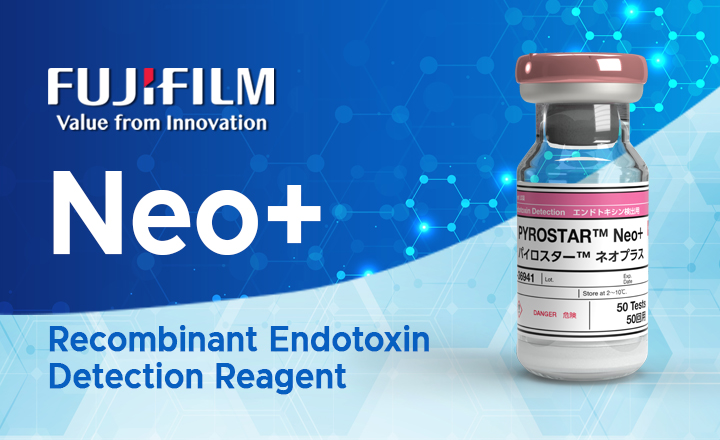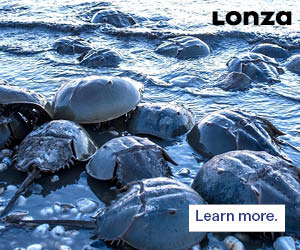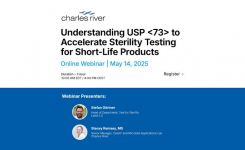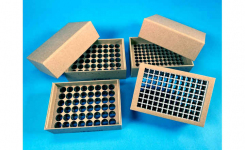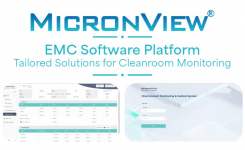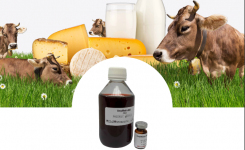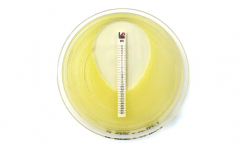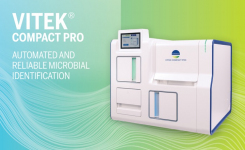
Introduction
 Bacterial endotoxin is a key safety and quality issue for the pharmaceutical and medical device industry. Its' importance lies in the fact that it is pyrogenic. Pyrogens are a diverse group of compounds defined by their ability to cause a rapid rise in core temperature when introduced into the bloodstream ('Pyro' comes from the Greek word for fire). This may lead to a rapid inflammation reaction and severe shock, followed in some cases by organ failure and eventual death. Clearly the presence of pyrogens in any injectable pharmaceutical preparation or on the surfaces of medical devices that will have contact with circulating blood or cerebrospinal fluid is a potential hazard and it is important to be able to test a wide range of products for the presence of these compounds. Bacterial endotoxin is by far the most ubiquitous pyrogen and the most likely to be found in a manufacturing environment and testing therefore focuses on methods for its detection.
Bacterial endotoxin is a key safety and quality issue for the pharmaceutical and medical device industry. Its' importance lies in the fact that it is pyrogenic. Pyrogens are a diverse group of compounds defined by their ability to cause a rapid rise in core temperature when introduced into the bloodstream ('Pyro' comes from the Greek word for fire). This may lead to a rapid inflammation reaction and severe shock, followed in some cases by organ failure and eventual death. Clearly the presence of pyrogens in any injectable pharmaceutical preparation or on the surfaces of medical devices that will have contact with circulating blood or cerebrospinal fluid is a potential hazard and it is important to be able to test a wide range of products for the presence of these compounds. Bacterial endotoxin is by far the most ubiquitous pyrogen and the most likely to be found in a manufacturing environment and testing therefore focuses on methods for its detection.
The term bacterial endotoxin is virtually synonymous with lipopolysaccharide (LPS), which is a major component of the outer layer of the cell wall in Gram-negative bacteria. The Gram-negative cell wall is more complex than that of Gram-positive bacteria and has an outer membrane or envelope made up of LPS. This acts as a permeability barrier for the cell and is also important in the development of biofilms and the trapping of macromolecules from the surrounding environment. In Gram-negative bacterial sepsis, the release of pyrogenic LPS causes large amounts of inflammatory cytokines to be released, potentially resulting in toxic shock. Gram-negative bacteria constantly synthesise LPS to replace that lost from the cell surface and when cells die they release LPS from the cell wall. This means that free LPS will always be present in an environment containing Gram-negative species. By contrast Gram-positive bacteria do not release extracellular LPS. It is therefore important to control the growth of Gram-negative species in water, in other raw materials and in the manufacturing environment to prevent pyrogen production. However, the absence of Gram-negative bacteria does not signify the absence of pyrogens. LPS is a very stable material and is not destroyed easily be heating or other means. It can persist for very long periods in liquids and on dry surfaces in the absence of viable bacteria. This means that tests specifically designed to detect endotoxin/LPS are essential to demonstrate the safety of pharmaceutical and medical device products.
Detection methods The first method widely used to detect endotoxin in pharmaceuticals was the rabbit pyrogen test, originally described in 1925. This method involves injecting rabbits with the test liquid and then monitoring them for any rise in body temperature and symptoms of fever. The rabbit pyrogen test is both time consuming and expensive to perform and cannot be made quantitative. Its application is also limited to products that do not cause adverse effects in the test animals. The test is still approved as a method of detecting pyrogens but is now rarely used, having been largely replaced by the Limulus Amoebocyte Lysate or LAL test.
The LAL test The LAL test has its origins in the discovery in the 1950s that the blood of the Atlantic horseshoe crab (Limulus polyphemus) forms clots in the presence of bacterial endotoxin. It was later found that the reaction is caused by a clotting factor contained in granules in motile blood cells called amoebocytes. The clotting factor is released into the blood outside the cell when endotoxin is detected as a defence against infection. The presence of even very low levels of bacterial endotoxin triggers a 'coagulation cascade' of reactions involving a series of serine protease enzymes and resulting in a coagulin gel clot. This reaction has been developed into a sensitive test for endotoxin by harvesting amoebocytes from the blood of horseshoe crabs and then lysing the cells to produce a reagent containing the clotting factor - the Limulus amoebocyte lysate.
Three basic LAL methodologies have been developed: gel-clot, chromogenic and turbidimetric. The gel-clot technique can form the basis of a very simple detection method by adding the reagent to a sample in a test tube and incubating at 37oC for one hour. If a clot is apparent on inversion of the tube, the result is positive. It is an endpoint method and can be made semi-quantitative by testing serial dilutions. Results are expressed as Endotoxin Units (EU), a measure of endotoxin potency rather than quantity. This reflects the variability in toxicity of naturally occurring LPS. The chromogenic method employs a synthetic substrate that produces a colour change when it is cleaved by endotoxin-activated protease, while the turbidimetric method relies on the developing coagulin gel clot altering the turbidity of the sample. Both can be used as quantitative kinetic methods by plotting standard curves of onset time against endotoxin concentration. Spectrophotometric instruments can detect changes in turbidity or colour at much lower endotoxin concentrations than those needed to form a visible gel-clot, making chromogenic and turbidimetric methods much more sensitive than the gel-clot method. The sensitivity is determined by the lowest concentration on the standard curve.
The LAL test is now a standard method for endotoxin testing of parenteral drugs and medical devices and is specified as a harmonised method in the US, European and Japanese Pharmacopoeias (USP chapter 85, EP 2.6.14 Supplement 6.6 and JP General Test 4.01). Any of the three methods can be used, but the reference method in the event of any dispute is the gel-clot limit test. The US FDA also published detailed guidance on endotoxin and pyrogen testing for the pharmaceutical and medical device industries in 2012. This includes information on sampling plans, sample storage, validation of alternative endotoxin tests and the preferred use of quantitative tests in Quality by Design (QBD) programs. There are a number of important points to be considered when conducting endotoxin testing. One is to ensure that pyrogen-free labware and reagents are used in the test to avoid false-positives. Medical devices are usually tested by rinsing the surface with a standard volume of water, or a suitable diluent, and this too must be pyrogen-free. A number of factors may interfere with the test, either by affecting the endotoxin or the LAL reagent. Examples include pH, protein concentration and the presence of interfering chemicals in parenteral drugs or in rinses. Interference could cause a failure to detect endotoxin and it is therefore very important to identify it. This is best done through the use of positive control samples spiked with a suitable reference standard endotoxin or a certified standard.
There are a wide range of commercial test products based on LAL methodology that are focused on convenience and ease of use. Reagents for gel-clot, chromogenic and turbidimetric tests are all available, usually optimised for a particular method and delivered in lyophilised form with substrates and buffers ready to be reconstituted prior to use. Reagents are available in quantities suitable for single tests, for multiple tests, or in bulk for laboratories handling large numbers of samples. Simple gel-clot tests can be carried out with minimal equipment, while kinetic tests at least require a spectrophotometer. Many commercial reagents are now designed for use in the microplate format. A degree of automation can be achieved by using incubating plate readers fitted with software designed to run endotoxin assays, such as Endoscan-V™ from Charles River.
Common Causes of Endotoxin Assay Failures and How to Avoid Them
Rapid LAL methods Reducing the time taken to complete tests is less of an issue for endotoxin than for other microbiological assays because the standard method takes little more than an hour to complete. Nevertheless, rapid tests have been developed and are available commercially. One example is the Charles River Endosafe®-PTS™ system, based on kinetic chromogenic methodology with precise amounts of LAL reagent, chromogenic substrate and control endotoxin pre-loaded in a four-channel cartridge. The cartridge is placed in a hand-held reader and the sample is then added to four wells at one end before being drawn through the channels containing the reagents. Results are available in about 15 minutes and the system is designed for point-of-use testing. A multi-cartridge Endosafe®-MCS system using the same technology is also available for testing multiple samples in a laboratory environment, while the Endosafe® Nexus™ is a fully automated, robotised system suitable for high volume water testing. A different approach has been taken by Highland Biosciences, which has developed the PyroXpress™ system. This also uses cartridges, which can be pre-loaded with reagents or accept reagents supplied by the user. It is based on simple, low-cost gel-clot methodology and employs 'multi-beam resonator' technology in a reader unit that can produce results in as little as five minutes and is also capable of providing kinetic data.
Alternatives to LAL While the LAL test remains the standard method for endotoxin testing, there are concerns over some aspects of the method that have driven the development of alternatives. For instance, commercial batches of lysate can vary in their sensitivity to endotoxin and also in their specificity. But a potentially bigger problem is the shrinking supply of horseshoe crabs. While blood from these creatures can be collected without harming the animal, other environmental pressures are causing the wild population to become endangered. Removing the need to collect their blood for LAL production would certainly help in their conservation. Much has already been achieved by reducing the amount of LAL reagent needed to perform assays, but the methodology still relies on an adequate supply of crabs and may ultimately be unsustainable.
One solution to this problem is the development of test methods using recombinant Factor C (rFC), an endotoxin-sensitive protein that acts as the primer for the coagulation cascade reaction in LAL tests. Sophisticated genetic engineering has enabled the production of a highly sensitive rFC that can be used as the basis of an alternative endotoxin testing method that is not reliant on the horseshoe crab. This has been developed into commercial test products, notably the PyroGene™ system supplied by Lonza. PyroGene is an end-point assay based on rFC, which is activated by endotoxin and then cleaves a synthetic substrate to release a fluorogenic compound. It runs in microplate format and takes one hour to produce a quantitative result. It is said to be more specific than traditional LAL assays and is not affected by false positives caused by glucan, which can be a problem in LAL tests. The FDA has approved rFC- based endotoxin testing for final product release, provided that it is properly validated against the reference gel-clot limit test.
Another alternative method is monocyte-activation testing (MAT), which exploits an immune reaction found in human blood. The test utilises monocytes that are activated by pyrogens to produce the inflammatory cytokine interleukin-1ß (IL-1ß), which can then be detected by an ELISA assay. The method is not specific to bacterial endotoxin, but will also detect other pyrogens and is approved by the EP as an in vitro alternative to the rabbit pyrogen test. It is said to be a better indicator of the human fever response to pyrogens than the LAL test because it is based on a human immune response. The MAT test has been developed into commercial products such as the PyroDetect system supplied by Merck Millipore.







